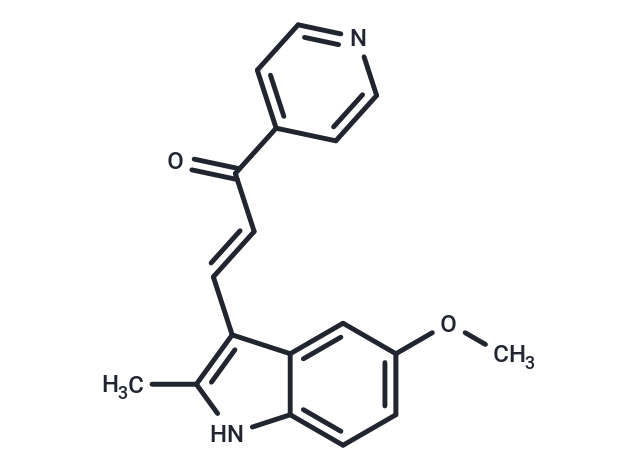Shopping Cart
Remove All Your shopping cart is currently empty
Your shopping cart is currently empty
MOMIPP is a PIKfyve inhibitor and a macropinocytosis inducer. MOMIPP readily penetrates the blood-brain barrier and is moderately effective in suppressing progression of intracerebral glioblastoma xenografts[1][2].

| Pack Size | Price | USA Warehouse | Global Warehouse | Quantity |
|---|---|---|---|---|
| 1 mg | $116 | In Stock | In Stock | |
| 5 mg | $163 | In Stock | In Stock | |
| 10 mg | $263 | In Stock | In Stock | |
| 25 mg | $479 | In Stock | In Stock | |
| 50 mg | $662 | In Stock | In Stock | |
| 100 mg | $993 | In Stock | In Stock | |
| 1 mL x 10 mM (in DMSO) | $258 | In Stock | In Stock |
| Description | MOMIPP is a PIKfyve inhibitor and a macropinocytosis inducer. MOMIPP readily penetrates the blood-brain barrier and is moderately effective in suppressing progression of intracerebral glioblastoma xenografts[1][2]. |
| In vitro | MOMIPP can induce intense macropinocytosis, leading to methuosis in cultured glioblastoma cells at low micromolar concentrations[1]. MOMIPP(3 μM) induces cell vacuolization in U373 and Hs683 cell lines[1]. The cytotoxic IPP compound, MOMIPP, causes early disruptions of glucose uptake and glycolytic metabolism. Coincident with these metabolic changes, MOMIPP selectively activates the JNK1/2 stress kinase pathway, resulting in phosphorylation of c-Jun, Bcl-2 and Bcl-xL[2]. |
| In vivo | MOMIPP (80 mg/kg; i.p.; once daily; for 15 consecutive days) shows result that MOMIPP is moderately effective in suppressing progression of intracerebral glioblastoma xenografts. |
| Cell Research | When JNK activation (phosphorylation) was assessed by western blot analysis after 24 h, MOMIPP(10 μM)has been found that induced major increases in JNK1/2 phosphorylation[2]. |
| Animal Research | MOMIPP (Athymic CrTac:NCR-Foxn1 mice (female, 7-8 weeks); 80 mg/kg; i.p.; once daily; for 15 consecutive days) suppressed progression of intracerebral glioblastoma xenografts[2]. |
| Molecular Weight | 292.33 |
| Formula | C18H16N2O2 |
| Cas No. | 1363421-46-8 |
| Smiles | COc1ccc2[nH]c(C)c(\C=C\C(=O)c3ccncc3)c2c1 |
| Relative Density. | 1.239 g/cm3 (Predicted) |
| Color | Yellow |
| Appearance | Solid |
| Storage | Powder: -20°C for 3 years | In solvent: -80°C for 1 year | Shipping with blue ice/Shipping at ambient temperature. | ||||||||||||||||||||||||||||||
| Solubility Information | DMSO: 15.13 mg/mL (51.76 mM), Sonication is recommended. | ||||||||||||||||||||||||||||||
Solution Preparation Table | |||||||||||||||||||||||||||||||
DMSO
| |||||||||||||||||||||||||||||||
| Size | Quantity | Unit Price | Amount | Operation |
|---|

Copyright © 2015-2026 TargetMol Chemicals Inc. All Rights Reserved.